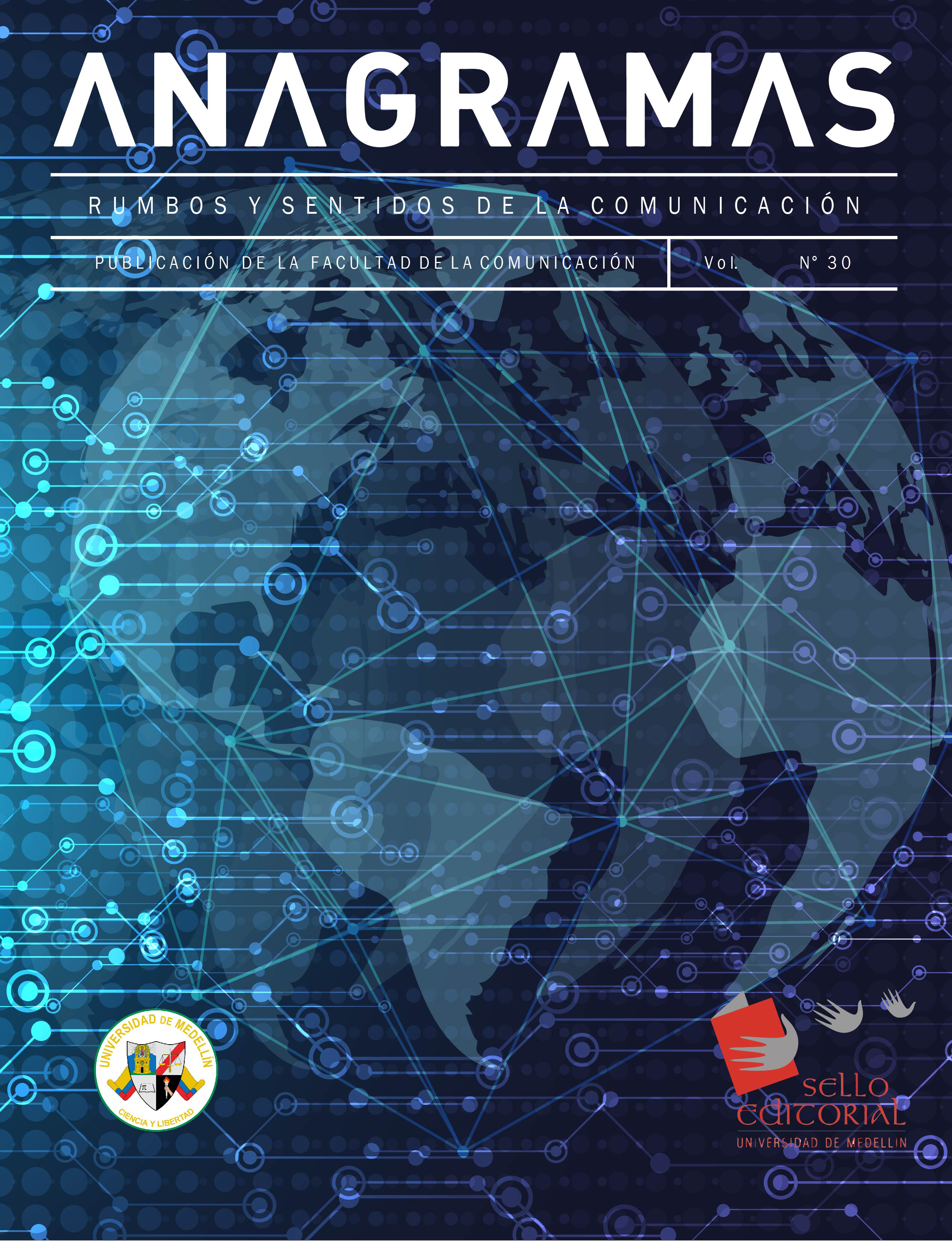Anime in Colombia: Exploration from Uses and Gratifications in the University Population of Cartagena de Indias
Main Article Content
Abstract
Anime is a Japanese audiovisual product with great popularity and consumption around the world, including Colombia. This study presents an analysis, from the Uses and Gratifications perspective, of the relationship between anime and the university population of Cartagena de Indias (Colombia), both students and professors, in order to understand how they consume it. They sought to identify the main reasons why consumption began and why it is sustained, measuring in turn the satisfaction obtained and how it has influenced their daily lives. The methodology was quantitative with an exploratory and descriptive scope. A mixed survey was applied through SurveyMonkey between March and May 2019 and 350 valid responses were received. Among the main findings, it was found that more than half of the participants began watching anime because it is different, complex, and diverse from other cartoons, as well as because of the aesthetics and drawing style. The main need they satisfy when consuming it is entertainment, to which they give a very high degree of satisfaction, and followed by learning. Likewise, it has inspired them to introspect about their lives, understand life better and grow up as a person. Similarly, they are aware of the influence it has on them, as well as the stimulation they receive to consume other Japanese cultural products.
Article Details
References
Arciniegas, S. y Mora, S. (2010). Estudio del diseño del anime japonés como generador de prácticas placenteras [tesis de maestría, Universidad Sergio Arboleda]. https://en.calameo.com/ read/002357685a554cd00c8b1
Arias, F., Robledo, N. y Cobos, T. (2020). Consumo de anime en la población universitaria de Cartagena. Luciérnaga, 12(23), 69-87. https://revistas.elpoli.edu.co/index.php/luc/article/view/1823
Bassols, N. (2018). Evolving Iconization and Destination Building: The Example of Cartagena, Colombia. Tourism Planning y Development, 16(3), 334-352. https://doi.org/10.1080/21568316.2018.1501730
Cervera, C. (2020). ¿Regresó el anime a Colombia? Las 2 Orillas. https://www.las2orillas.co/regreso- el-anime-a-colombia/
Cobos, T. (2010). Animación japonesa y globalización: la latinización y la subcultura otaku en América Latina. Razón y Palabra, (72). http://www.razonypalabra.org.mx/N/N72/Varia_72/32_Cobos_72.pdf
Cobos, T., Robledo, N., Arias, F. y Devoz, E. (2020). Doushite anime wo mimasu ka? Un análisis al consumo de animación japonesa en la población universitaria de Cartagena de Indias. ALAIC 2020 [ponencia]. Desafíos y paradojas de la comunicación en América Latina: las ciudadanías y el poder, Medellín, Colombia. https://repository.upb.edu.co/bitstream/handle/20.500.11912/8688/GT7.%20Estudios%20de%20Recepci%C3%B3n.pdf?sequence=9&isAllowed=y
Cooper-Chen, A. (2012). Cartoon Planet: The Cross-Cultural Acceptance of Japanese Animation. Asian Journal of Communication, 22(1), 44-57. https://doi.org/10.1080/01292986.2011.622774
D´Adamo, O., García, V. y Freidenberg, F. (2007). Medios de comunicación y opinión pública. Editorial McGraw Hill.
El Tiempo. (2001). Muñecos malditos. https://www.eltiempo.com/archivo/documento/MAM-715005
El Universal. (2019). La música que anima al anime. https://www.eluniversal.com.mx/espectaculos/la-musica-que-anima-al-anime
Galvis, A. (2016). Significados sociales, estilos de vida y prácticas de consumo relacionadas con el consumo de anime y manga de los jóvenes aficionados con acceso a medios online en Bogotá [tesis de pregrado, Universidad Santo Tomás]. Repositorio Institucional Santo Tomás. https://pdfs.semanticscholar.org/fdf4/bec726a89d9efe3b4d14fc18769365aff5f7.pdf
García, A. (2022). La industria cultural del anime: desarrollo, retos y perspectivas. Observatorio Iberoamericano de la Economía y la Sociedad del Japón, 13(37), 16-31. https://www.eumed.net/uploads/articulos/ff7a4f50ae9debe89b02d25982136c9a.pdf
Gonçalves, J., Navio. C. y Moura, P. (2020). The Occidental Otaku: Portuguese Audience Motivations for Viewing Anime. Convergence, 27(1), 247-265.
Greenberg, B. (1974). Gratifications of Television Viewing and Their Correlates for British Children. En Katz, E., Blumler, J. y Gurevitch, M. (eds.), The uses of mass communications: Current perspectives on gratifications research (pp. 71-92). Sage.
Hernández, R., Fernández, C. y Baptista, P. (2014). Metodología de la investigación. Editorial McGraw Hill Education.
Horno, A. (2012). Controversia sobre el origen del anime. Una nueva perspectiva sobre el primer dibujo animado japonés. Con A de Animación, (2), 106-118. http://dx.doi.org/10.4995/ caa.2012.1055
Igartua, J. y Humanes, M. (2004). Teoría e investigación en comunicación social. Ediciones Síntesis.
Fernández, C., Baptista, P. y Elkes, D. (1999). La televisión y el niño. Colofón S.A.
Jáuregui, D. (2019). ¿Por qué el anime es tan popular en Colombia? Señal Colombia. Señal Colombia. https://www.senalcolombia.tv/cultura/anime-manga-otaku-japon-influencia
Kam, T. (2013). The Common Sense That Makes the ‘Otaku’: Rules for Consuming Popular Culture in Contemporary Japan. Japan forum, 25(2), 151-173. http://dx.doi.org/10.1080/09555803.2012.743481
López, L. (1986). Introducción a los medios de comunicación de masas. Universidad Santo Tomás.
Lozano, J. (2007). Teoría e investigación de la comunicación de masas. Pearson Educación.
Mosquera, I. (2013). Influencia de la música en las emociones: una breve revisión. Realitas: revista de Ciencias Sociales, Humanas y Artes, 1(2), 34-38.
Okeda, D. y Koike, A. (2011). Working Conditions of Animators: The Real Face of the Japanese Animation Industry. Creative Industries Journal, 3(3), 261-271. https://doi.org/10.1386/cij.3.3.261_1
Páez, D. (2018). Nada seríamos sin las viejas series animadas de la televisión japonesa. Semana. https://www.semana.com/contenidos-editoriales/japon-el-mundo-al-derecho/articulo/nada-seriamos-sin-las-viejas-series-animadas-de-la-television-japonesa/58827
Park, J. (2005). 'Creating My Own Cultural and Spiritual Bubble': Case of Cultural Consumption by Spiritual Seeker Anime Fans. Culture and Religion, 6(3), 393-413. https://doi.org/10.1080/01438300500460443
Pichón, M. (2012). El anime y la apropiación de la cultura japonesa por parte del otaku barranquillero [tesis de pregrado, Universidad del Norte].
Rincón, O. (2004). Animé, el renacimiento. El Tiempo. https://www.eltiempo.com/archivo/documento/MAM-1529450
Rueda, F. y Espinosa, A. (2010). Will The Poor of Today be The Poor of Tomorrow? The Determinants of Poverty and Vulnerability in Cartagena Colombia. Economía y Región, 4(1), 47-71. https://revistas.utb.edu.co/index.php/economiayregion/article/view/208
Shock. (2019). Los mejores episodios de Cuentos de los Hermanos Grimm para pasar el guayabo. https://www.shock.co/cine-y-tv/los-mejores-episodios-de-cuentos-de-los-hermanos-grimm-para-pasar-el-guayabo-ie2636
Valle, M. (2017). The Discursive Detachment of Race from Gentrification in Cartagena de Indias, Colombia. Ethnic and Racial Studies, 41(7), 1235-1254. https://doi.org/10.1080/01419870.2016.1274419
Yamato, E. (2015). 'Growing as a Person': Experiences at Anime, Comics, and Games Fan Events in Malaysia. Journal of Youth Studies, 19(6), 743-759. https://doi.org/10.1080/13676261.2015.1098769
Wright, C. (1960). Functional Analysis and Mass Communication. Public Opinion Quarterly, 24(4), 605-620. https://doi.org/10.1086/266976





